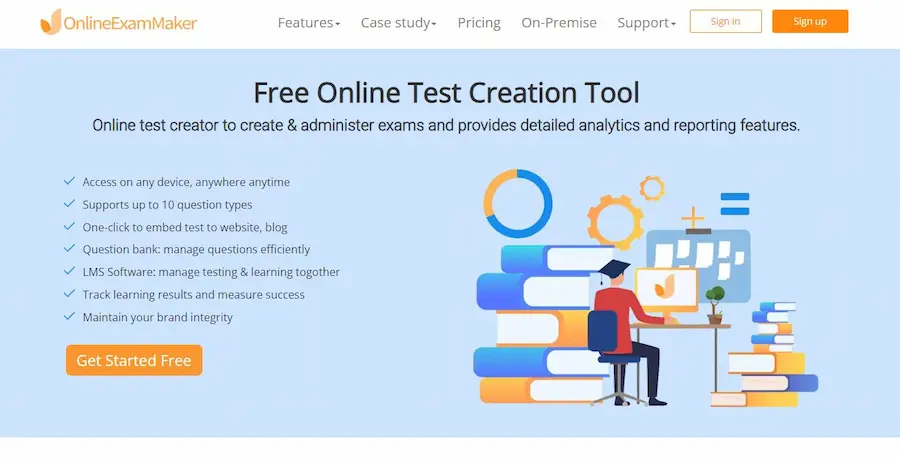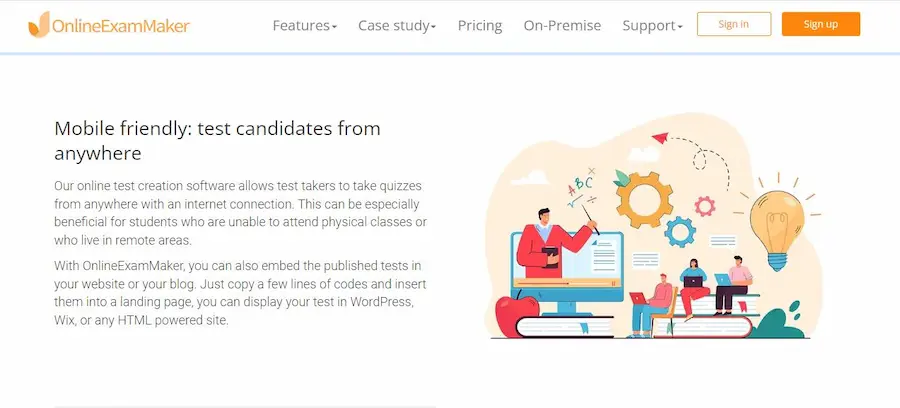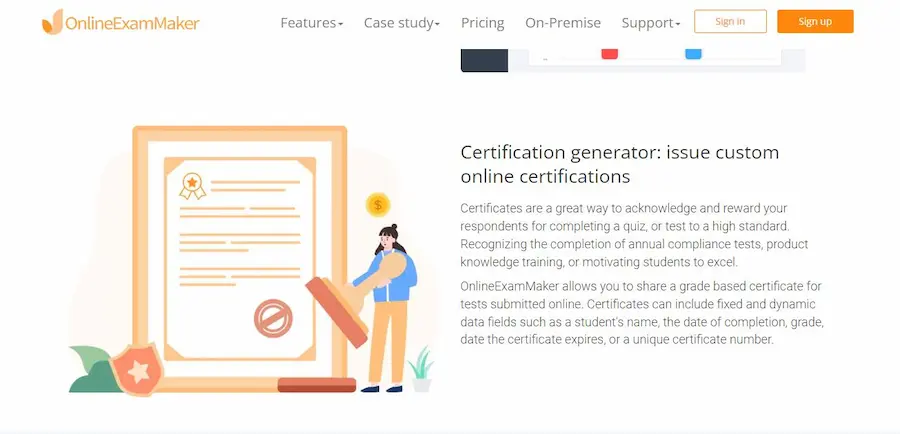The world of education and training has witnessed a significant transformation in recent years, driven by technological advancements. One of the most notable changes has been the shift from traditional testing methods, such as paper-based exams and quizzes, to the adoption of online test software and digital assessment tools. This transition has sparked debates and discussions about the advantages and disadvantages of these two approaches to testing and assessment.
Today, we will conduct the ultimate comparison between online test software and traditional testing methods, exploring their respective features, benefits, challenges, and considerations.
Traditional Testing Methods
Before delving into the world of online test software, it’s essential to understand the foundation upon which education and assessment have traditionally rested. Traditional testing methods encompass a range of assessment techniques that have been used for generations:
Paper-Based Exams: Perhaps the most common form of traditional testing, paper-based exams involve students or test-takers answering questions on physical paper, often within a constrained timeframe.
Quizzes and Assignments: Traditional quizzes and assignments are typically printed on paper and distributed to students. Students complete the questions and return the paper for grading.
Oral Examinations: In oral examinations, students respond to questions posed by educators or examiners verbally. This method is common in language assessments and viva voce exams.
Advantages of Traditional Testing Methods
1. Familiarity: Traditional testing methods have a long history in education, making them familiar to both educators and students.
2. Accessibility: Paper-based exams are accessible to students without access to digital devices or the internet.
3. Physical Evidence: Physical exams provide tangible evidence of student work and responses.
4. Minimal Technical Issues: Traditional methods are less prone to technical issues or glitches that can disrupt online assessments.
Disadvantages of Traditional Testing Methods
1. Scalability: Traditional testing methods can be cumbersome and time-consuming, particularly when dealing with a large number of test-takers.
2. Limited Question Types: Traditional methods primarily support multiple-choice and essay questions, limiting the variety of assessment formats.
3. Delayed Feedback: Grading paper-based exams and assignments can be time-intensive, leading to delayed feedback for students.
4. Environmental Impact: The use of paper for traditional testing contributes to environmental concerns, such as deforestation and waste.
The Emergence of Online Test Software
The digital age has ushered in a new era of assessment with the emergence of online test software and digital assessment tools. These platforms provide educators, trainers, and organizations with the means to create, administer, and analyze assessments in a digital environment. The advantages of online test software have fueled their rapid adoption in various educational and training contexts.
Pro Tip
You can build engaging online quizzes with our free online quiz maker.
Key Features of Online Test Software

Online test software offers a diverse set of features designed to enhance the assessment process and redefine learning metrics:
1. Question Variety: Online test software supports a wide range of question types, including multiple-choice, multiple-answer, true/false, fill-in-the-blank, matching, and open-ended essay questions.
2. Customization Options: Users can customize assessments with branding, logos, and themes, creating a consistent look and feel.
3. Security Measures: These platforms offer options for secure test delivery, such as lockdown browsers, password protection, and IP restrictions.
4. Real-Time Analytics: Educators and trainers have access to reporting and analytics dashboards, providing insights into learner performance.
5. Integration Capabilities: Online test software integrates seamlessly with learning management systems (LMS) and other educational tools, streamlining assessment delivery and data management.
6. Collaboration and Sharing: Collaboration features enable real-time collaboration among educators and trainers, making it easier to create and edit assessments. Assessments can be efficiently shared via links or embedded in websites and blogs.
Advantages of Online Test Software
1. Scalability: Online test software can accommodate a large number of test-takers simultaneously, making it suitable for both small classrooms and massive online courses.
2. Accessibility: Digital assessments are accessible from anywhere with an internet connection, eliminating geographical barriers.
3. Immediate Feedback: Online assessments often provide immediate feedback to students, allowing them to assess their performance quickly and identify areas of improvement.
4. Adaptive Testing: Some online test software use adaptive testing algorithms to present questions tailored to each student’s skill level, ensuring assessments are appropriately challenging.
5. Rich Analytics: Online test software provide detailed analytics on student performance, engagement, and improvement over time, enabling data-driven decision-making.
6. Environmental Impact: Digital assessments reduce the use of paper, contributing to environmental sustainability.
Challenges and Considerations

While online test software offers numerous advantages, they also present unique challenges and considerations:
1. Technical Issues: Technical problems, such as internet connectivity issues or platform glitches, can disrupt online assessments.
2. Data Privacy: Educators and organizations must ensure compliance with data privacy regulations when collecting and storing assessment data.
3. Academic Integrity: Preventing cheating and unauthorized access is a concern in online assessments, requiring robust security measures.
4. Digital Divide: Online assessments assume access to digital devices and the internet, potentially disadvantaging students without these resources.
Why Create An Interactive Online Test with OnlneExamMaker?
OnlneExamMaker is a feature-rich software solution that allows educators, trainers, and organizations to easily create interactive and engaging quizzes, surveys, and assessments. With its user-friendly interface and powerful capabilities, OnlneExamMaker simplifies the process of designing and delivering effective online tests.
Key Features:
Customizable Design: Personalize your quizzes with custom branding, logos, and color schemes to maintain consistency with your organization’s visual identity.
Interactive Features: Engage participants with multimedia elements, such as images, videos, and audio files, to make the learning experience more dynamic and engaging.
Real-time Feedback and Grading: OnlneExamMaker instantly provides feedback to participants upon completion of each question or the entire quiz. Additionally, you can automate grading and generate detailed reports to assess individual and group performance.
Create Your Next Quiz/Exam with OnlineExamMaker
Traditional vs. Online: A Detailed Comparison
Now, let’s conduct a detailed comparison between traditional testing methods and online test software across various dimensions:
Cost:
• Traditional: Printing and distributing paper-based exams can incur costs for paper, printing, and logistics.
• Online: While there may be initial setup costs for online test software, digital assessments eliminate ongoing expenses related to paper and printing.
Convenience:
• Traditional: Paper-based exams require physical logistics, including printing, distribution, and collection.
• Online: Digital assessments offer convenience with remote access, automated grading, and instant feedback.
Security:
• Traditional: Traditional exams are susceptible to cheating and unauthorized access.
• Online: Online test software employ security features like lockdown browsers and IP restrictions to mitigate cheating risks.
Scalability:
• Traditional: Scaling traditional exams to accommodate a large number of test-takers can be challenging and time-consuming.
• Online: Online test software can handle a high volume of test-takers simultaneously, making them ideal for large-scale assessments.
Environmental Impact:
• Traditional: Paper-based exams contribute to deforestation and generate waste.
• Online: Digital assessments reduce the environmental footprint by minimizing paper usage.
Flexibility and Customization:
• Traditional: Traditional methods have limited customization options, often relying on standardized formats.
• Online: Online test software offer extensive customization options, allowing educators and trainers to tailor assessments to specific needs.
Immediate Feedback:
• Traditional: Grading paper-based exams can result in delayed feedback for students.
• Online: Online assessments often provide immediate feedback, allowing students to identify areas of improvement promptly.
Accessibility and Inclusivity:
• Traditional: Traditional exams may not accommodate diverse learners, including those with disabilities.
• Online: Online test software can be designed to be accessible and inclusive, benefiting a wider range of students.

The Future of Testing and Assessment
As we look ahead, the future of testing and assessment is likely to be shaped by ongoing technological advancements and educational trends:
1. Personalization: Online test software may become even more adept at personalizing assessments based on individual learning styles and progress.
2. Artificial Intelligence (AI): AI-powered assessments could become more prevalent, offering insights into cognitive processes and learning patterns.
3. Data Integration: Online test software may integrate even more seamlessly with other educational technologies, enabling a more holistic view of the learning journey.
4. Continuous Learning: Learning metrics may evolve to focus on continuous learning, with assessments facilitating ongoing skill development and growth.
Conclusion
The comparison between online test software and traditional testing methods is not a matter of one being superior to the other. Instead, it’s about choosing the right testing method based on specific goals, needs, and contexts. Both approaches have their advantages and challenges, and the ideal choice depends on factors such as the nature of the assessment, the target audience, and the available resources.
As technology continues to advance and education and training evolve, the landscape of testing and assessment will continue to transform. Online test software have played a pivotal role in this transformation, offering flexibility, accessibility, and rich analytics that have redefined how we measure and improve learning outcomes. Ultimately, the choice between traditional and online testing methods should align with the goals of enhancing learning and assessment in an ever-changing educational landscape.